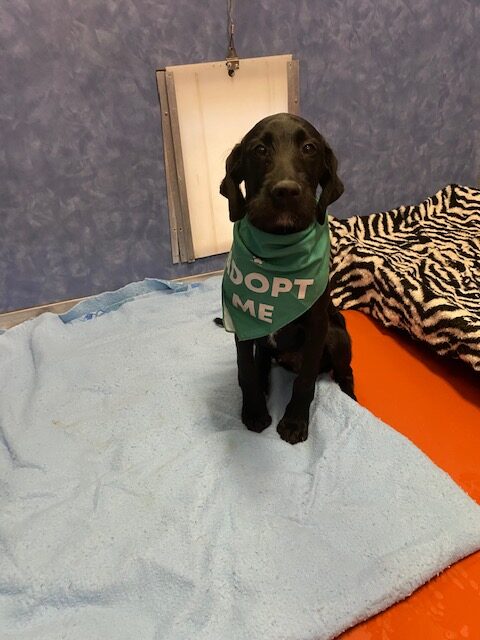
12 May Second Chance: How to Properly Greet a Dog!
Second Chance Humane Society’s Animal Resource Center and Thrift Shops have been serving San Miguel, Ouray & Montrose Counties for 27 years. Call 626-2273 to report a lost pet, learn about adopting a homeless pet, or about our Emergency Response, Community Medical, Spay/Neuter, Volunteer, or other services. View shelter pets and services online: www.adoptmountainpets.org.

Spud
Hey there, I’m Spud! I’m a fabulous young homeless lad here at Second Chance who is learning that life can be good. I’m still a bit timid, and thus a classic example of a pup who really needs “dog-friendly” human greetings. If you don’t know what I’m talking about – read on!
Most people think greeting a dog is a no-brainer and abide by one of a handful of traditional strategies when meeting an unfamiliar canine. Although well intentioned, people are usually are in the human mindset, greeting dogs like they do people: reaching, staring, touching, hugging, kissing…unfortunately, none of these typical greetings are ideal for canines, and in fact, can signal a threat to a dog.
Think instead about how a socially appropriate dog typically greets another socially appropriate unfamiliar dog: no direct approach, no direct eye contact, no reaching out or over, certainly no squealing or hugging and no showing of teeth.
Add to this the fact that dog-loving humans, still in their human point of view, generally find talking to, looking at, and touching dogs rewarding, and so assume the dog will find this rewarding as well, even though many dogs (just like many people) don’t actually love being touched by strangers.
So perhaps greeting an unfamiliar dog isn’t quite a no brainer. To do it well, in fact, requires quite a bit of observation, understanding, and restraint. And not just for you, teaching kids to meet dogs politely means safer kids and more empathetic dog lovers in the future.
There are three simple steps involved in appropriately meeting an unfamiliar dog. First, ask the owner, which fortunately is becoming a more common practice. Second, ask the dog. Do this by orienting yourself sideways to the dog (as dogs do to one another) and keep your hands to yourself.
If the dog approaches you all waggy/touching you gently/seems interested in engaging with you, the answer is yes. If the dog seems indifferent to you, turns away from you, backs away, moves behind his person, seems tense and rigid, barks or growls, the dog is telling you no. Even if the owner says yes, and tries to get the dog to engage with you, if the dog says no, respect his wishes and stop your attempts to interact with him.
The third step is about actually engaging with the dog, after the answer is yes from both owner and dog. Dogs have a blind spot on top of their head and don’t really like being touched there. They also don’t love being tapped on. Instead scratch under their chin or on the chest, or slowly stroke along their back or sides. After a few seconds stop and continue only if the dog is asking for more.
A little education can go a long way and will create a world where dogs are better understood. So to be a true friend of dogs – rather than just a dog lover – learn how to properly greet a dog you don’t know, and show them the world is full of understanding humans.
This is what I, a 4-month-young Standard Poodle/Dalmatian mix, am learning and it is making me more willing to trust people every day and ready for a true forever home. I am a hopelessly sweet and gentle guy who charms everyone he meets, but will need an adopter with playful dog siblings who will help to build my confidence. Call to meet me today!


Sorry, the comment form is closed at this time.